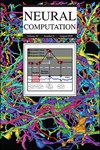Adaptive Filter Model of Cerebellum for Biological Muscle Control With Spike Train Inputs
IF 2.7
4区 计算机科学
Q3 COMPUTER SCIENCE, ARTIFICIAL INTELLIGENCE
引用次数: 0
Abstract
Prior applications of the cerebellar adaptive filter model have included a range of tasks within simulated and robotic systems. However, this has been limited to systems driven by continuous signals. Here, the adaptive filter model of the cerebellum is applied to the control of a system driven by spiking inputs by considering the problem of controlling muscle force. The performance of the standard adaptive filter algorithm is compared with the algorithm with a modified learning rule that minimizes inputs and a simple proportional-integral-derivative (PID) controller. Control performance is evaluated in terms of the number of spikes, the accuracy of spike input locations, and the accuracy of muscle force output. Results show that the cerebellar adaptive filter model can be applied without change to the control of systems driven by spiking inputs. The cerebellar algorithm results in good agreement between input spikes and force outputs and significantly improves on a PID controller. Input minimization can be used to reduce the number of spike inputs, but at the expense of a decrease in accuracy of spike input location and force output. This work extends the applications of the cerebellar algorithm and demonstrates the potential of the adaptive filter model to be used to improve functional electrical stimulation muscle control.小脑自适应滤波模型用于具有尖峰训练输入的生物肌肉控制。
小脑自适应滤波器模型的先前应用包括模拟和机器人系统中的一系列任务。然而,这仅限于由连续信号驱动的系统。这里,通过考虑控制肌肉力量的问题,将小脑的自适应滤波器模型应用于由尖峰输入驱动的系统的控制。将标准自适应滤波器算法的性能与具有最小化输入的改进学习规则和简单比例积分微分(PID)控制器的算法进行了比较。控制性能是根据尖峰的数量、尖峰输入位置的准确性和肌肉力量输出的准确性来评估的。结果表明,小脑自适应滤波器模型可以在不改变尖峰输入驱动系统控制的情况下应用。小脑算法在输入尖峰和力输出之间产生良好的一致性,并显著改进了PID控制器。输入最小化可用于减少尖峰输入的数量,但以降低尖峰输入位置和力输出的准确性为代价。这项工作扩展了小脑算法的应用,并证明了自适应滤波器模型用于改善功能性电刺激肌肉控制的潜力。
本文章由计算机程序翻译,如有差异,请以英文原文为准。
求助全文
约1分钟内获得全文
求助全文
来源期刊

Neural Computation
工程技术-计算机:人工智能
CiteScore
6.30
自引率
3.40%
发文量
83
审稿时长
3.0 months
期刊介绍:
Neural Computation is uniquely positioned at the crossroads between neuroscience and TMCS and welcomes the submission of original papers from all areas of TMCS, including: Advanced experimental design; Analysis of chemical sensor data; Connectomic reconstructions; Analysis of multielectrode and optical recordings; Genetic data for cell identity; Analysis of behavioral data; Multiscale models; Analysis of molecular mechanisms; Neuroinformatics; Analysis of brain imaging data; Neuromorphic engineering; Principles of neural coding, computation, circuit dynamics, and plasticity; Theories of brain function.
 求助内容:
求助内容: 应助结果提醒方式:
应助结果提醒方式:


